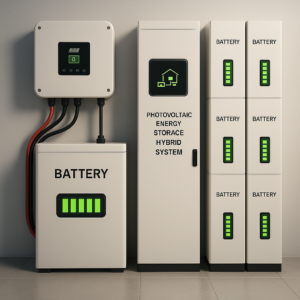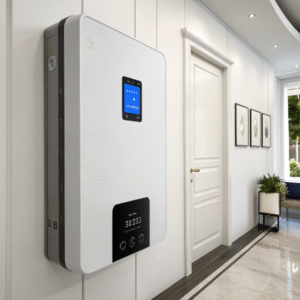What is the main purpose of a home wall-mounted energy storage battery?
by
What is the main purpose of a home wall-mounted energy storage battery?
Looking to reduce electricity bills and gain energy independence? A wall-mounted battery might be your solution.
The main purpose of a home wall-mounted energy storage battery is to store excess solar energy for later use, provide backup power during outages, and optimize energy consumption to reduce electricity costs.
Transition Paragraph:
Understanding the role of these batteries is just the beginning. Let's explore more about their capacity, differences from floor-mounted units, and grid connectivity.
What is the typical capacity of a wall-mounted energy storage battery in kWh?
Wondering how much power these sleek units can actually hold?
Wall-mounted energy storage batteries typically range from 5kWh to 20kWh, with 10kWh being the most common for residential use—enough to power essential home appliances for hours during outages.
[image placeholder]
Dive deeper Paragraph:
Factors Affecting Capacity
- Home Energy Needs: A smaller household might only require 5kWh, while larger homes or those with high energy consumption may need 15kWh+.
- Solar Panel Output: Higher solar generation allows for larger battery capacity utilization.
- Budget: Costs scale with capacity (typically \$500-\$1,000 per kWh).
| Use Case | Recommended Capacity |
|---|---|
| Backup (basics) | 5–10kWh |
| Full home backup | 10–20kWh |
| Off-grid living | 20kWh+ |
Pro Tip: Pairing a 10kWh battery with a 6kW solar system often balances cost and efficiency for average homes.
What is the difference between a wall-mounted energy storage battery and a floor-mounted one?
Choosing between wall and floor? Space and flexibility are key.
Wall-mounted batteries save floor space and offer easier installation, while floor-mounted units typically have higher capacities (20kWh+) and better scalability for large energy needs.
Dive deeper Paragraph:
Key Comparisons
-
Installation:
- Wall: Requires sturdy wall mounting; ideal for garages or utility rooms.
- Floor: Needs ground space but simpler to install for expandable systems.
-
Capacity & Scalability:
- Wall: Limited by size (usually ≤20kWh).
- Floor: Modules can be stacked (e.g., Tesla Powerwall vs. Powerpack).
-
Cost:
- Wall: \$7,000–\$15,000 installed.
- Floor: \$10,000–\$20,000+ (higher capacity).
Decision Guide:
- Small home/apartment → Wall-mounted (e.g., LG RESU).
- Large home/off-grid → Floor-mounted (e.g., Generac PWRcell).
Do wall-mounted storage batteries support grid-connected use?
Can your battery work with the grid? Absolutely—and it’s smarter than you think.
Yes, most wall-mounted energy storage batteries support grid-connected use, enabling features like peak shaving (using stored energy during high-rate hours) and net metering credits.
Dive deeper Paragraph:
How Grid Connectivity Enhances Value
- Time-of-Use Optimization: Charge during off-peak hours (\$0.10/kWh), discharge during peak (\$0.30/kWh).
- Net Metering 2.0: Excess solar energy sold back to the grid offsets costs.
- Grid Services: Some systems (e.g., Sonnen) participate in utility demand-response programs.
Limitations:
- Grid-tied systems often require inverters (e.g., SolarEdge) for compatibility.
- During outages, most batteries need sunlight to recharge unless configured for off-grid.
Conclusion
Wall-mounted batteries optimize energy use, provide backup power, and integrate with grids—typically offering 5–20kWh capacities in space-saving designs.
You may also be interested in:




